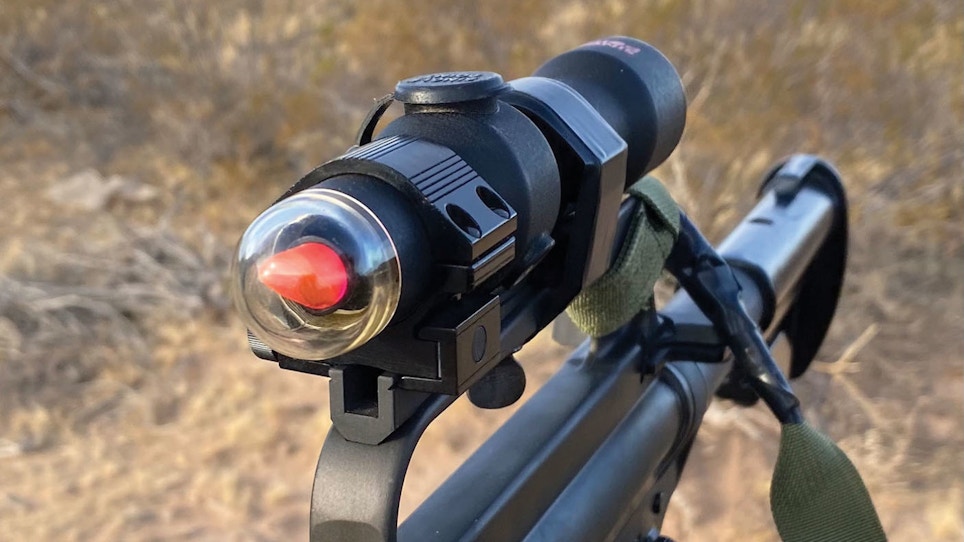Last November I had the opportunity to participate in the 50th Anniversary of the Son Tay Raid, an audacious joint U.S. military deep penetration incursion into North Vietnam to rescue Americans held as prisoners of war on the night of November 21, 1970.
The ground assault force was made up of handpicked Green Berets from the Army’s Special Forces, ferried to the objective by Air Force aircrews, with air support provided by the Navy and Marine Corps.
The Raiders, as they have come to be known, would be conducting the mission during night and wanted every advantage they could get in the cramped quarters of the POW camp. They were given satellite photos from which they built a mockup of the compound for rehearsals. They even built a scale model of the Son Tay Camp, which was given its own code name: Barbara.
Mission analysis identified the need for many unique pieces of equipment. For instance, Major Dick Meadows, the commander of one of the assault elements, carried a megaphone to inform POWs that they were being rescued. Maj. Meadows was also the source of one of the most iconic pieces of equipment used in the mission.
Legend has it that a friend of Maj. Meadows had seen a revolutionary red-dot sight on the cover of a gun magazine and recommended its test and adoption by the assault force. The truth of the matter is apparently a bit more complicated. According to Dr. Earl Burris and Owen Lincoln, who are experts in the weapons used by the Raiders, Maj. Meadows had previously conducted an Army evaluation of the Singlepoint Occluded Eye Gunsight (OEG), so he was well versed in its capabilities. An internal evaluation by the Raiders themselves noted that, “at a distance of 25 meters, the poorest marksman could place all rounds in a 12-inch circle at night.” All in all, the task force purchased 50 of the sights for use on their carbines.
Unlike modern red-dot optics, the Singlepoint OEG is just a sight — there are no optics involved. It is also unpowered. The end of the fiber optic can be seen beneath the clear plastic dome at the business end. Light is gathered there, and the center of the sight glows in the color of the fiber-optic filament, which is much larger than we are currently accustomed to. The dot is a whooping 16 MOA, which is massive compared to what we encounter today. To facilitate use at night, a small vial of tritium was located near the light-gathering hole at the front of the OEG to make the fiber-optic filament glow. This would mean the dot would appear green during nighttime hours.
Regardless of color, the dot would appear over a black background, as there is no objective lens. The shooter keeps both eyes open, and using binocular vision, the dot appears over the target clearly seen by the nondominant eye.
There was also a daylight-only version of the Singlepoint OEG, but these were sold commercially. The day/night version seems to be restricted to military and law enforcement sales only.
Although the operation was a tactical success, with the task force effectively entering the POW compound and neutralizing the security force located there, there were no Americans at the camp. It was a “dry hole.” Many would call the effort a failure, but it resulted in scaring the North Vietnamese government into moving American POWs located around the country into the centrally located Lon Nol Prison, known as the “Hanoi Hilton,” in the capital of North Vietnam. There, the Americans were able to interact, greatly increasing morale and resolve. If anything, this situation helped more Americans survive the tortuous conditions of captivity at the hands of the communists.
To a small degree, this was made possible due to a widget as simple as a $49.50 weapon sight. Although there complaints at the time about the price being too high, it’s only the equivalent of about $300 today.
I’ve questioned why the U.S. Army failed to field the enhanced capability of this sight after witnessing it in combat. One factor was the cost. During the Cold War, the military still looked at the individual soldier much as it had during World War II and didn’t want to invest much money in small arms, particularly if it was only effective for close shots.
Another issue is that it was a commercial item and wouldn’t stand up to what the average GI would throw at it. This argument definitely has some merit, considering the Raiders felt the need to use electrical tape to secure the sight to the carrying handles of their GAU-5/A/A Colt carbines.
However, one would think that if the concept had merit, a new, more robust design would have been developed. Once again, select elements of Army Special Forces led the way, adopting precursors to the modern red-dot optic back in the 1980s. By the mid-90s, Special Operators from every service were using red-dot sights. But it was not until the early 2000s and the Global War on Terror that every infantryman in the Army and Marines would be outfitted with a red-dot sight to improve target engagement. And, like the Singlepoint OEG used at Son Tay, every one of the red-dot sights adopted by the military was a modification of a commercially available item.





